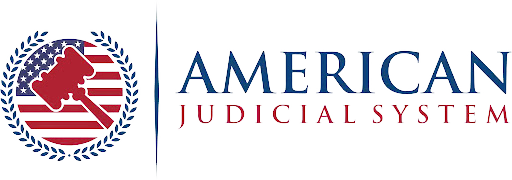In the tangled web of economic debates, few issues stir up as much fiery discussion as the minimum wage. Right in the thick of it is Pennsylvania, a state that embodies the intricate dance of social and economic forces shaping our workforce today. As we delve into the historical archives of policy and economic shifts, one thing becomes crystal clear: the minimum wage isn’t just a figure; it’s the bedrock of fairness and economic well-being.
Pennsylvania’s minimum wage laws, like those across the nation, reflect a delicate balancing act between ensuring fair compensation for workers and maintaining economic competitiveness for businesses. From its humble origins rooted in the progressive era to the present-day landscape of legislative initiatives and public outcry, the historical evolution of minimum wage in Pennsylvania serves as a poignant reminder of the enduring quest for social justice and economic prosperity.
Join us as we delve deep into the intricacies of minimum wage in Pennsylvania, uncovering the historical narratives, contemporary challenges, and future possibilities that define this critical aspect of our state’s economic fabric.
The Current State of Minimum Wage In Pennsylvania
The minimum wage acts as a foundational pillar, intended to ensure a baseline standard of living for workers. Pennsylvania, adhering to the federal minimum wage, sets its baseline hourly rate at $7.25, a figure that has sparked extensive debate and calls for change within the state.
Critics argue that the current rate fails to meet the living wage requirements in many parts of Pennsylvania, pushing for legislative adjustments to align more closely with the cost of living. Proponents of an increase highlight the disparity between the minimum wage and the living wage, pointing out that a single adult in Pennsylvania needs to earn significantly more to cover basic living expenses without additional financial support.
Legislative Efforts and Public Discourse:
Recent years have witnessed a surge in legislative efforts aimed at increasing the minimum wage in Pennsylvania. Proposals have varied, with some advocating for a gradual increase to reach $15 per hour over several years, mirroring movements in other states and cities across the United States.
Public discourse on this issue is vibrant and multifaceted, reflecting a broad spectrum of opinions on the economic and social implications of a minimum wage increase. Advocates for the hike argue that it would elevate living standards, reduce poverty, and stimulate economic activity by increasing consumer spending. Conversely, some business owners and economists caution against potential negative impacts, including job losses, increased automation, and higher prices for goods and services.
Impact on the Workforce:
The workforce in Pennsylvania is diverse, spanning various industries with varying degrees of dependency on minimum-wage labor. Sectors such as retail, hospitality, and food services, which traditionally employ a significant number of minimum-wage workers, are at the heart of the debate. An increase in the minimum wage could lead to a reshaping of these industries, potentially affecting employment patterns, business models, and wage structures across the board.
Historical Evolution of Minimum Wage in Pennsylvania
Tracing back the lineage of minimum wage laws in Pennsylvania offers a captivating window into the socio-economic transformations that have unfolded over decades. The Keystone State’s journey with minimum wage legislation is not just a local policy matter but a reflection of the broader national narrative of workers’ rights and economic shifts.
The inception of minimum wage laws in Pennsylvania can be traced back to the early 20th century, aligning with the progressive era’s push for labor reforms across the United States. This period marked the beginning of concerted efforts to address wage disparities and labor abuses, setting the stage for the state’s ongoing dialogue around fair labor standards.
Throughout the mid-20th century, Pennsylvania, like much of the nation, saw incremental adjustments to its minimum wage. These adjustments were often responses to the rising cost of living, inflation rates, and changing economic conditions. Each increase was a balancing act, aiming to improve workers’ purchasing power while considering the potential impact on the state’s businesses and the overall economy.
The late 20th and early 21st centuries brought about a renewed focus on the minimum wage as economic inequalities widened. Pennsylvania’s legislative actions during this time were influenced by federal initiatives and independent state-level analyses. Despite these efforts, the state’s minimum wage has remained aligned with the federal minimum since the last federal increase in 2009, spotlighting the complex interplay between state and federal policies.
The historical evolution of minimum wage in Pennsylvania is a testament to the state’s ongoing struggle to reconcile economic growth with social equity. As debates around the minimum wage continue to evolve, they encapsulate the larger economic and political dynamics at play. This historical perspective underscores the critical role of minimum wage laws in shaping the socio-economic landscape of Pennsylvania, reflecting a broader quest for a fair and equitable society.
Comparative Analysis: Pennsylvania vs. Neighboring States
Pennsylvania’s workforce is as diverse as it is dynamic, playing a pivotal role in both the state’s economy and the livelihoods of its hourly workers. The minimum wage serves as a foundational element, directly influencing their financial stability. This report delves into several critical aspects of Pennsylvania’s labor landscape as of 2023, providing insights into demographics, industry sectors, historical patterns, the influence of inflation, and comparisons with neighboring states.
- Demographics: Within Pennsylvania, individuals earning the minimum wage or less accounted for 2.1% of all hourly workers, which translates to 1.1% of the total workforce. Notably, the state boasted a higher proportion of hourly workers (55%) compared to the national average (50%).
- Industry and Occupation Trends: The state witnessed a higher fraction (2.4%) of its workforce earning at or below the federal minimum wage of $7.25, surpassing the national figure of 1.5%. Remarkably, more than half of the wage earners in both Pennsylvania and the broader U.S. fell into the highest wage category, earning above $15.00 per hour.
- Historical Trends: The trajectory of Pennsylvania’s minimum wage has seen significant shifts, rising from $5.15 an hour to $6.25 on January 1, 2007, and further to $7.15 on July 1, 2007. Subsequently, the federal minimum wage hike to $7.25 on July 24, 2009, was also adopted by Pennsylvania. Between 2022 and 2023, the state experienced a slight decline in hourly employment by 16,600 workers (-0.5%), even as the overall employment figures surged by 207,500 workers (+3.4%).
- Impact of Inflation and Poverty: A critical analysis of how inflation erodes the purchasing power of the minimum wage provides essential context. Additionally, evaluating the annual income from minimum wage jobs against federal poverty thresholds offers a clearer picture of economic sufficiency.
- Regional Comparisons: The report concludes with a comparative analysis of minimum wage policies between Pennsylvania and its neighboring states, aiming to gauge its regional competitiveness.
Through these lenses, this report aims to offer a comprehensive overview of the state’s minimum wage landscape, highlighting its implications for workers and the broader economic fabric of Pennsylvania.
Economic Implications of Minimum Wage Adjustments
Let’s delve into the economic implications of minimum wage adjustments. These effects extend beyond individual paychecks and have far-reaching consequences for various stakeholders. Here are some key points to consider:
Labor Market Efficiency:
- The minimum wage relative to average worker productivity plays a crucial role. If the minimum wage exceeds a worker’s productivity, employers may choose not to hire them, focusing instead on workers whose productivity justifies the wage.
- In a free labor market, inexperienced workers would have more opportunities, and pay would align with productivity. However, a high minimum wage can price out certain groups, such as young workers, immigrants, and those re-entering the workforce after an extended absence.
Compliance and Wage Theft:
- While most firms comply with minimum wage increases, some engage in evasion and avoidance. Research shows that wages below legally established minimums are surprisingly prevalent.
- Young African American workers experience the largest erosion of potential wage gains following a minimum wage increase. Ensuring compliance remains a challenge, and its impact on disadvantaged groups warrants attention.
Productivity and Inequality:
- Raising the minimum wage can boost productivity by incentivizing workers and improving job satisfaction. It also addresses income inequality.
- However, opponents argue that higher wages could lead to inflation, reduced business competitiveness, and potential job loss.
Short-Term Stimulus vs. Long-Term Effects:
- Increasing the minimum wage can stimulate short-term economic growth by boosting consumer spending. Yet, long-term effects vary, including potential risks like reduced employment and increased business costs4.
Minimum wage adjustments have multifaceted implications, touching upon economic efficiency, compliance, productivity, and social equity. Policymakers must weigh these factors carefully when considering changes to wage floors.
Voices from the Ground: Workers and Employers Speak
Employee voice refers to the way individuals communicate their views, concerns, and ideas to their employer. Here are some key insights:
Importance of Employee Voice
- Mutual Trust: Effective employee voice contributes to building trust between employers and employees. Workers who feel heard and valued are more likely to engage actively in their roles.
- Innovation and Productivity: Encouraging self-expression leads to increased job satisfaction and greater influence. Employees who feel empowered to share their opinions contribute to innovation and problem-solving within the organization.
- Inclusive Environments: Employee voice plays a crucial role in creating inclusive workplaces. It fosters an environment where diverse perspectives are respected and considered.
Challenges and Benefits
- Fear and Retribution: Employees may fear retribution for speaking up. Overcoming this challenge involves building relationships with colleagues and leaders who provide support.
- Organizational Culture: Creating a safe environment for open communication is essential. Trust, transparency, and psychological safety are key components.
- Decision-Making: Diverse perspectives enhance decision-making processes, leading to better outcomes.
- Employee Engagement: Valuing employee voice positively impacts engagement and satisfaction.
- Issue Resolution: Employee input helps identify and resolve workplace issues and conflicts.
Remember, organizations that prioritize employee voice foster collaboration, innovation, and trust.
Conclusion
The discourse surrounding the minimum wage in Pennsylvania is a multifaceted dialogue that encapsulates the state’s economic, social, and political complexities. As this narrative unfolds, it reflects a broader quest for balance—between enhancing living standards for workers and ensuring economic viability for employers. The historical journey of minimum wage legislation in Pennsylvania, marked by incremental changes and ongoing debates, underscores a persistent effort to adapt to the evolving economic landscape. Looking ahead, the path forward requires thoughtful consideration of diverse perspectives and innovative solutions to address the needs of Pennsylvania’s workforce while fostering a robust, inclusive economy. As stakeholders navigate this terrain, the evolution of minimum wage laws remains a pivotal chapter in Pennsylvania’s broader story of striving for social equity and economic vitality in an ever-changing world.










